Little Sur River Fastpack Exploration
Just North of Point Sur, underneath a sweeping bend in highway 1, the Little Sur River dumps into the ocean. This river makes it’s beginning on the North flanks of Ventana Double Cone and Kandlbinder Peak in the heart of the Ventana Wilderness.
Ever since a trip down the Jackson Creek Route with Leor earlier this year, I had been curious about what mysteries this drainage might hold. I could not find any documentation of anyone having reaching the headwaters via the full Little Sur drainage, but on Jack Glendening’s Big Sur Map, there are two use-camps part way up (Bathtub Camp and North Fork Camp). The existence of these sites suggests that people have definitely ascended at least part way up this drainage, and may have even used it as a route towards Kandlbinder, Ventana Double Cone, or the Window. Since I had also been wanting to visit the Circular Pools, it made sense to construct a through-route up to Kandlbinder as opposed to an out-and-back to Circular Pool, followed by a trek up the Jackson Creek Route.
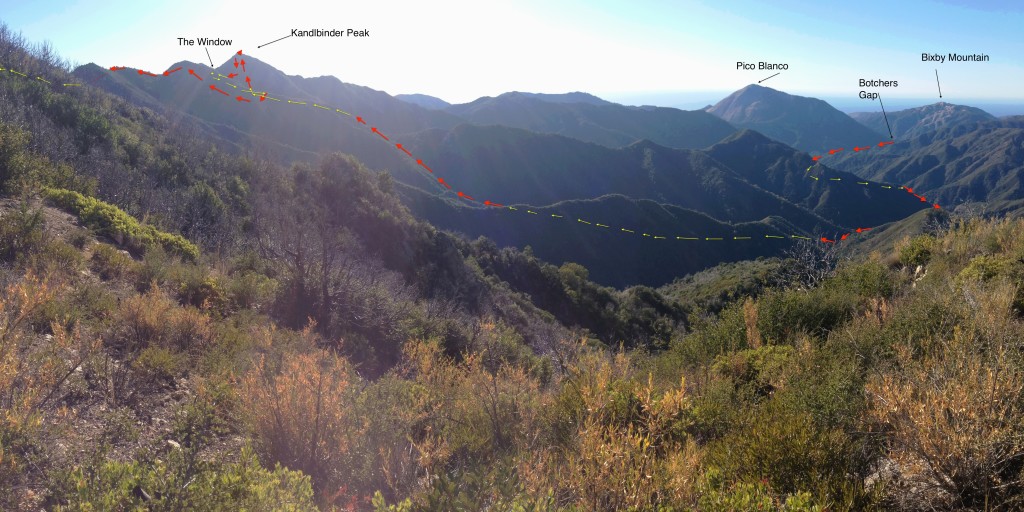
This is an annotated map of the route we took towards Kandlbinder Peak via the Little Sur River drainage. For a 3D effect, the red arrows represent the places where you could see the route in the foreground, and the yellow arrows represent the portion obscured by the mountains.
Meanwhile, my friend Glenn had been asking about running a multi day, trans-Ventana Route. He queried me for route suggestions, and I proposed an arduous route. Unfortunately, I didn’t have time to do detailed research, so I quickly drew a nasty red line that would take us through a big chunk of some of my favorite parts of the Ventana with a few new-to-me connecting trails in between.
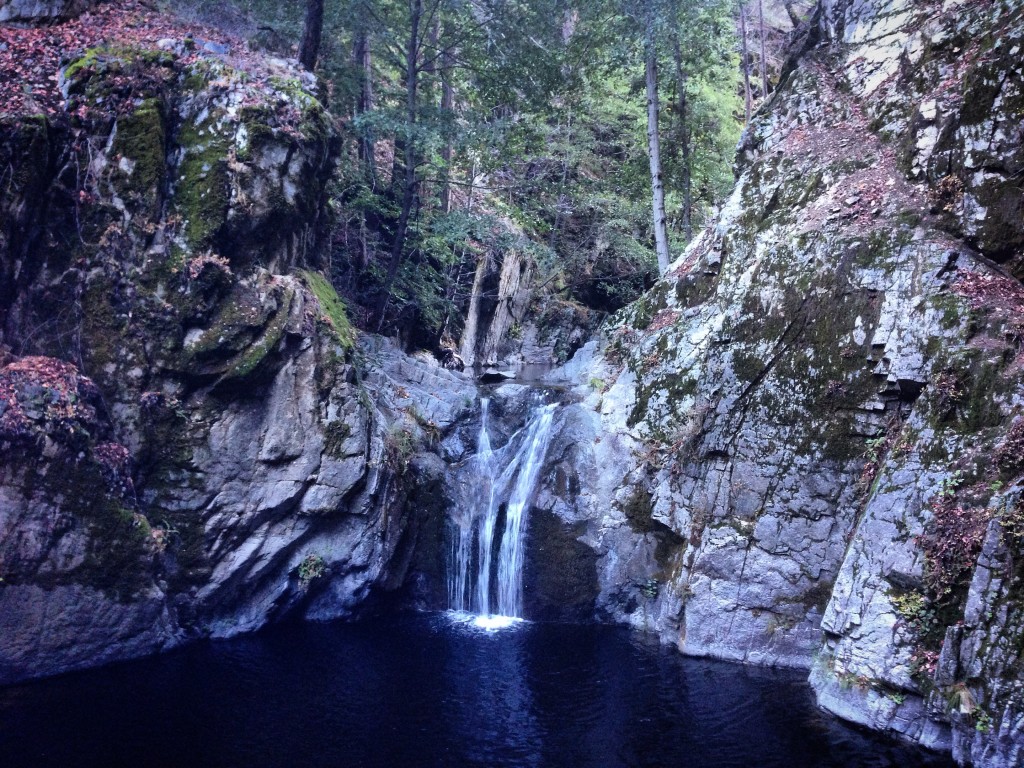
Circular Pool from above. This vantage was afforded by the landslide that converted circular pool to “semi-circular pool.” Upon arrival, Glenn mentioned that this pool didn’t look too circular. It wasn’t until we met “Fat Popi” that we found out that this landslide had just recently reshaped the pool.
Jack’s map does not include a picture of the pool, so I was delighted to find Circular pool being even more impressive than I had imagined. This would be a perfect place to visit on a hot day, and it is not very difficult to reach from the end of the trail (which is at Jackson Camp, though a use trail continues a couple miles further). To continue to make progress up-river beyond circular pool, we back-tracked a few feet and then ascended the steep slopes on the North (left) side of the falls. These slopes are heavily overgrown, so the key is to ascend as little as possible: just enough to get above the cliffs over the falls – and then drop back down the river as soon as feasible.
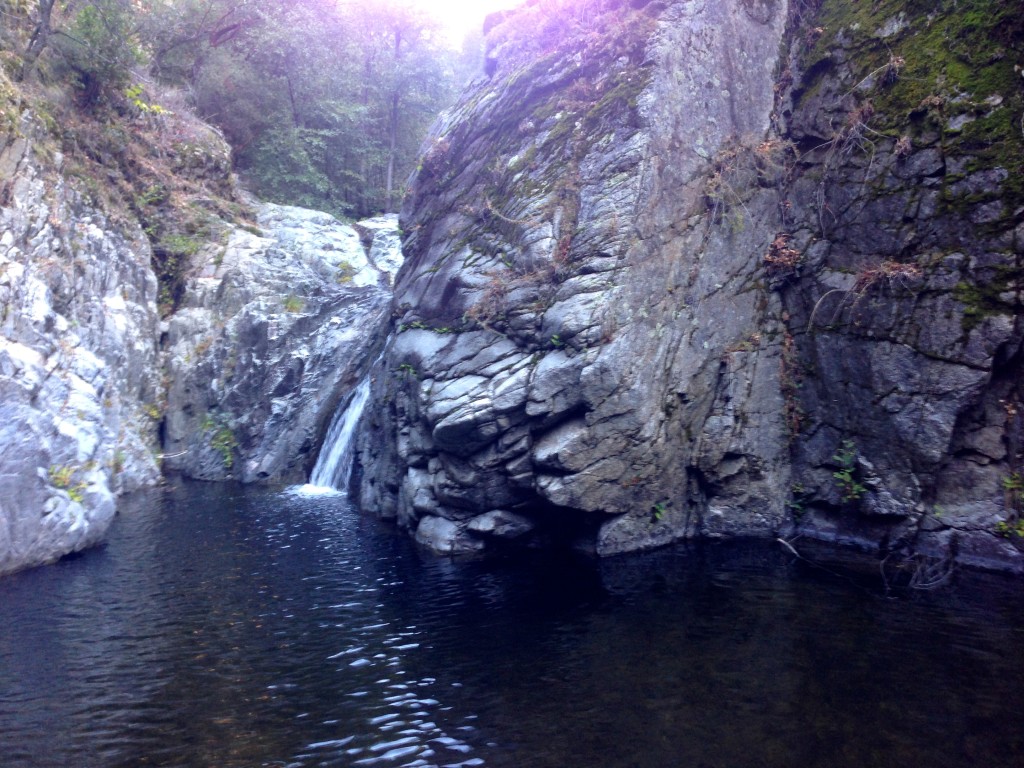
Several impressive pools lie above the first pool! The pool pictured here is about 0.5 miles above the first circular pool. This is the last cataract that requires a careful “go around.” On the falls just before this, we found a black and red nylon rope just to the right of the falls. Had this rope been absent, our options would have been to swim or do an extensive go-around. More bold climbers could probably have used the existing hand holds without the assistance of the rope.
In the mile above the first Circular pool, we encountered a few obstructions, but none were difficult to go around. I do believe that one critical moment was the discovery of a rope on one of the falls. With our overnight gear and cold November temperatures, neither of us were mentally prepared to swim to the falls to do a direct ascent (or face a huge go-around).
The drainage is very narrow in this region, making for amazing canyon scenery of carved rock – but poor lighting most of the day. By the time you reach Bathtub Camp, the Canyon begins to widen, and sunlight makes its way in.

Low-angle November sunlight felt as wonderful as a warm cup of coffee. This was one of my favorite spots.
After the ~1,800′ contour, the route becomes increasingly difficult due to dense overgrowth and deadfall. There was no evidence of anyone having ever been up here. Below, we had seen evidence of the old Bathtubs camp, but we could not find any evidence of the North Fork Camp. Surely, human presence is very rare between Fox Camp and North Fork Camp, but above those camps, human presence is probably non-existent. This creates a different feel in terms of wildlife.
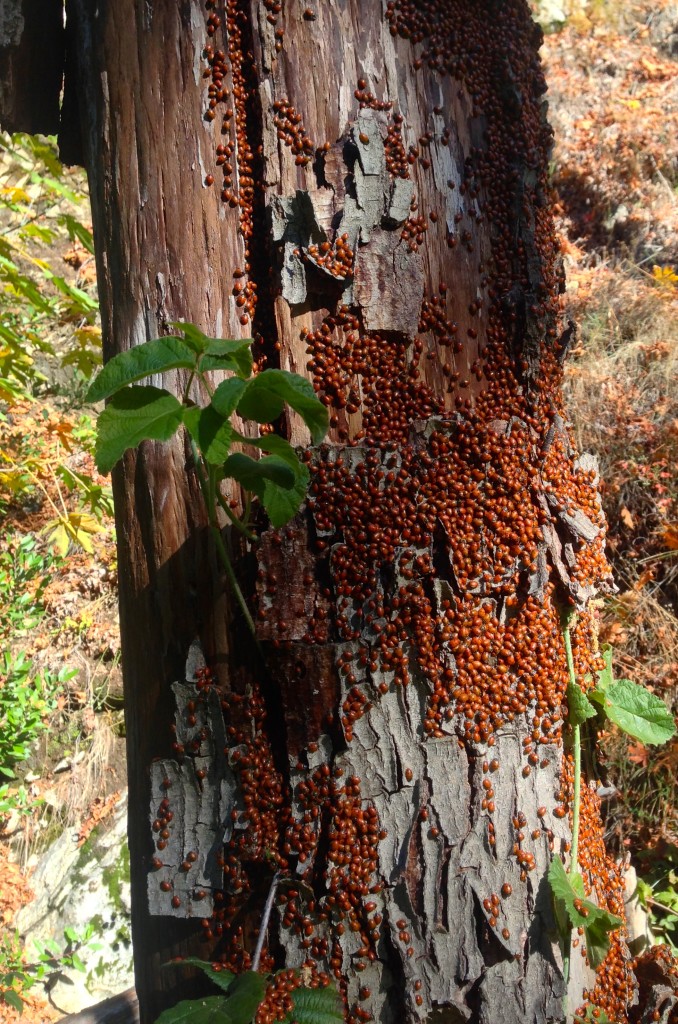
We found a lady bug overwintering site at the ~2,000′ contour. This reminded me of the one I had seen on the equally remote Devil’s Canyon, however this aggregation was much larger. Ladybugs can live up to 3 years, and they gather during the winter for warmth (and perhaps decreased risk of predation).
Further upstream, we startled a Great Blue Heron that was perched in a tree above us. Given the character of this drainage, I was surprised to see this bird here. The water was often obscured by the heavy brush and deadfall, and we hadn’t seen any fish. How could a heron hunt here? I theorize that there may have been a rookery nearby, but did not investigate.
By the middle of our first day, it was clear to me that we’d be unable to complete our extremely ambitious route; the upper reaches of the Little Sur River are slow going – surely slower than the Jackson Creek route. We had planned to travel across the high ridge from Ventana Double Cone to Ventana Cone, and eventually Pine Ridge. I was already plotting a new route in my mind down the Puerto Suello trail to the Carmel River trail.
At the 3,250′ mark, we merged onto the Jackson Creek Route, which was easily identified from the saddle when I suddenly spotted a blue flag. The Jackson Creek route goes to the Window, and is marked well (in patches) by flagging and cairns. It still requires a lot of bushwhacking, though. We followed this route for a while until we reached a talus patch at about 3,600′. From there, we left the route and connected talus “islands” to head more-or-less directly towards Kandlbinder Peak. The last 1,000′ feet were welcomingly easy after the extensive bushwhacking.
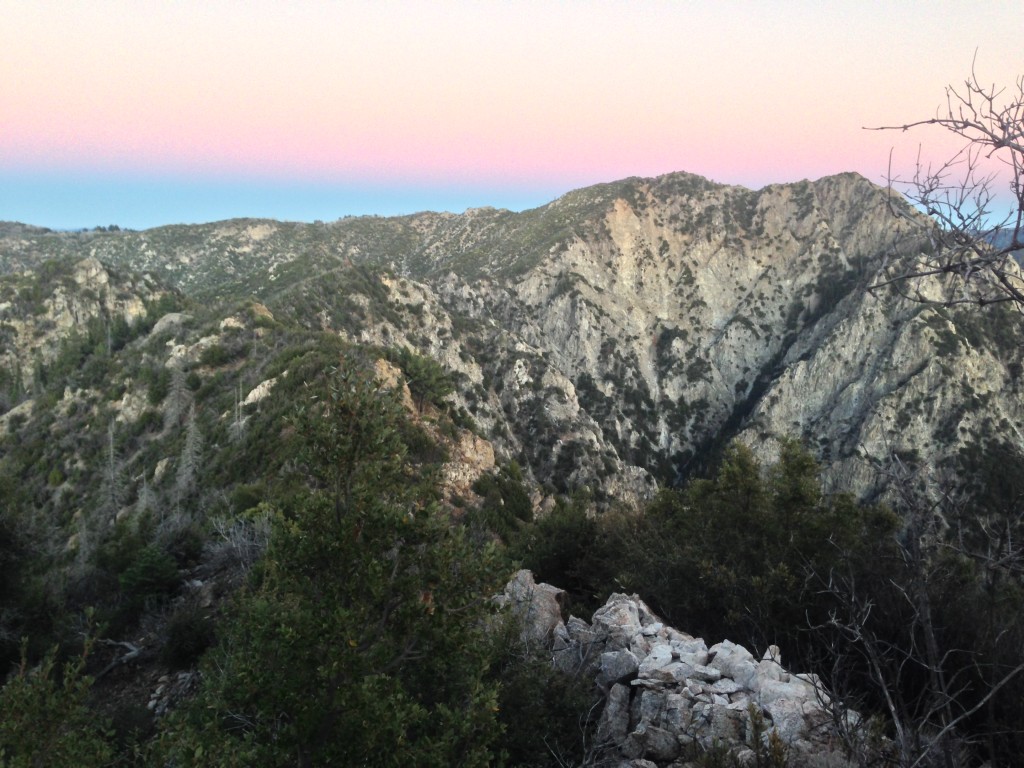
Although we were a little disappointed to be behind our anticipated schedule, viewing the sunset from Kandlbinder Peak was a real treat! In this photo, you’re looking towards Ventana Double Cone (right most peak). Our route for the next day will more-or-less follow the ridge line, but we drop off the ridge to the North in several places to avoid heavy brush.
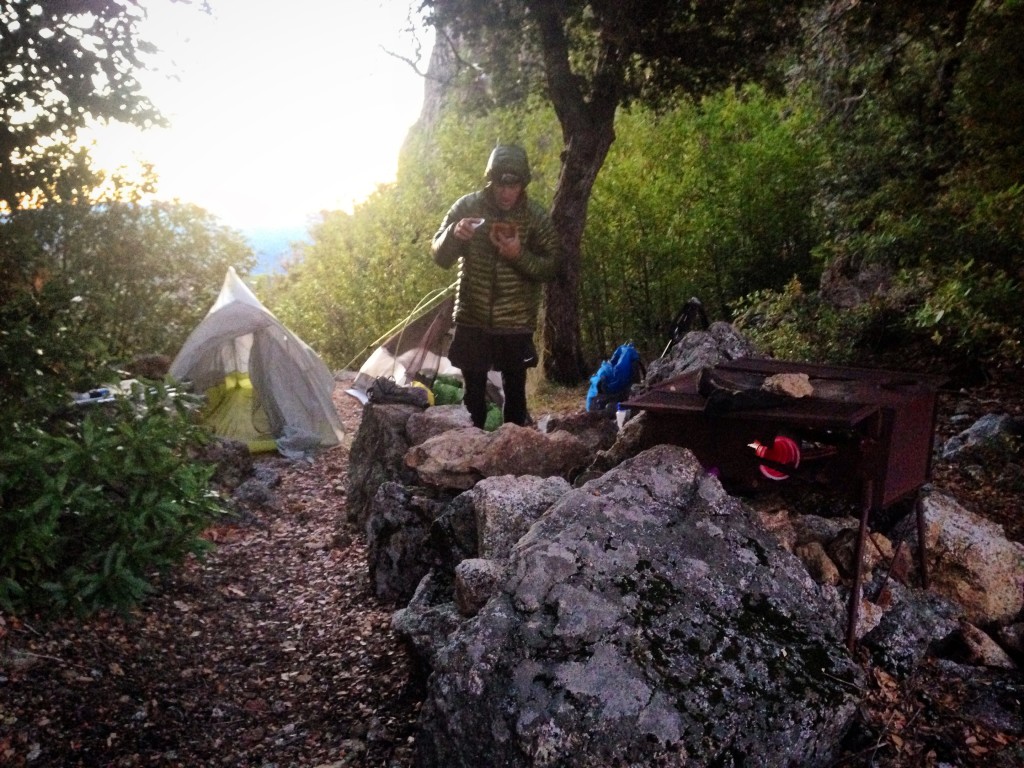
I was overjoyed that we got to camp at the beautiful and historic window. I had wanted to camp here ever since I first visited this Spring.
From Kandlbinder to the Window, Glenn and I more-or-less retraced the route that Leor and I had taken in March (He had found the route using satellite). This route takes advantage of patches of talus to avoid brush and moderate cliffs along the ridge.
Camping at the Window was a delight. Inside the summit register box, there is a well packed binder that preserves the history of this location. I read some of the stories aloud to Glenn between bites of uncooked food and chocolate. The binder mentions a legend that this window historically was actually a hole in the rock (kind of like an arch), and that in the 1906 earthquake, it collapsed. In the 60s, this location was of greater interest, and a man named Ward Allison sought for 2 years to find a route here. Eventually he did, and on May 25, 1968, 32 people hiked from different directions to converge here. Of these 32, a few people had arranged for a “preemptive” rescue. They convinced the Naval Air facility that there would be 32 people hiking to this location, and if they didn’t have food and supplies, some of them would probably need to be rescued. As such, 3 barrels of salad, cake, ice, and beer were air dropped to this impossible location. Imagine the surprise this group had!
I knew that navigating from the window to VDC was going to be difficult. On our last trip, Leor had told me that it was “heinous.” Interestingly, the old USGS maps actually show a trail on this portion (though surely it never existed). Leor told me that he had been unable to find an easy way over the knob directly North West of the Window, so we headed straight down the gully (along the Jackson Creek Route) until we found a weakness in the cliff. From far away, it looked like we could ascend some ramps to the unknown region above. The rock was extremely loose here, and after ascending 30′ vertically, I convinced Glenn that we should down-climb. He reluctantly agreed.
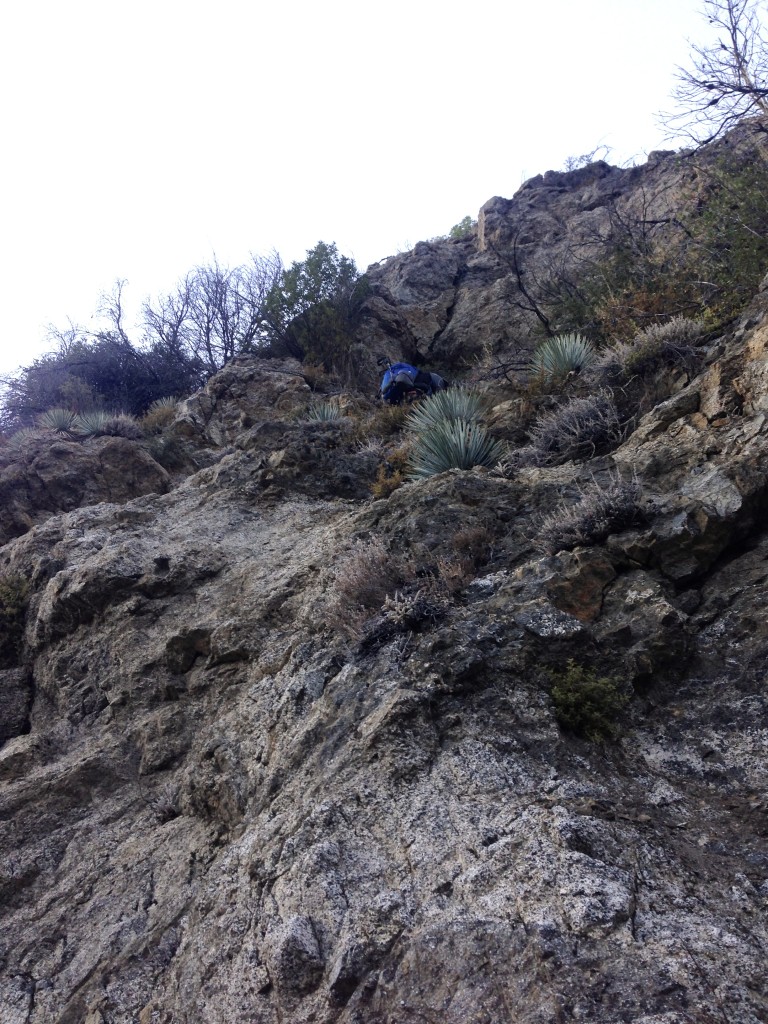
Glenn seen at the apogee of where we had climbed. Technically, the rock looks easy, but almost every hold pulls off in your hand.
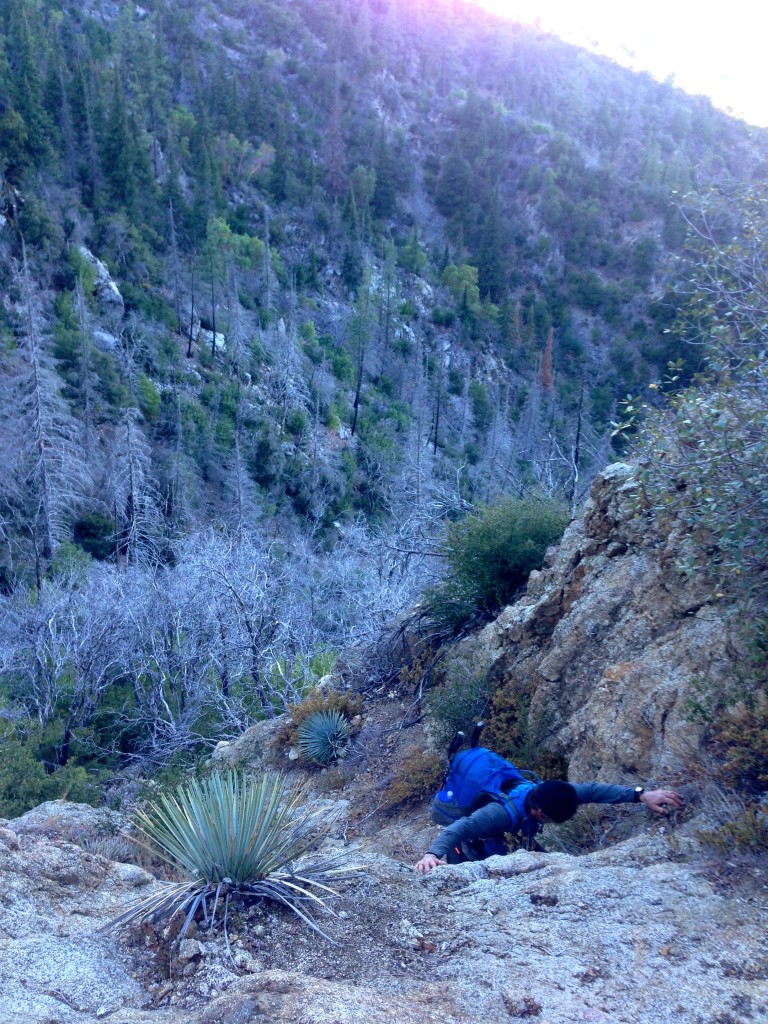
After we down-climbed, we found a weakness in the rock that afforded very easy climbing. Moreover, we were able to link together subsequent patches of talus and rock to escape virtually all bushwhacking to the ridge!
After the down climb, we found a new route, and started making excellent progress. I tried not to get overly confident… and eventually we hit some “heinous” bushwhack. Being mentally prepared helped make it actually enjoyable. Glenn and I celebrated small victories announcing “I’m running here!” when we reached clear patches that didn’t stop us in our tracks.
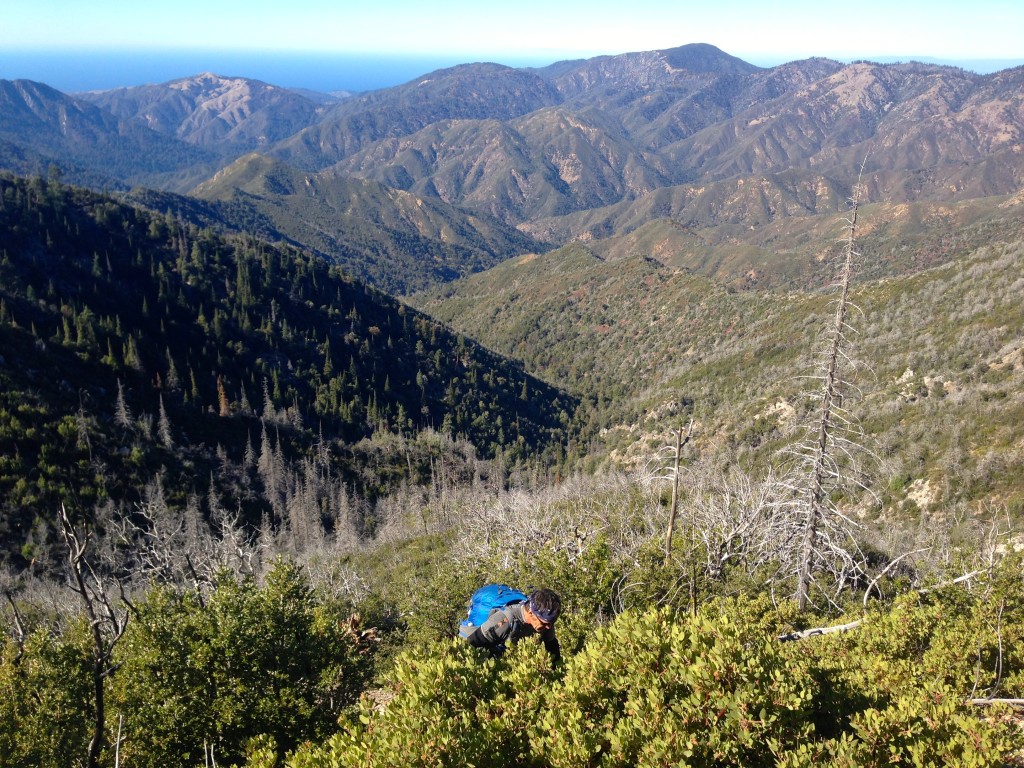
From here, you can visualize (almost) the entire Little Sur river! Perfect skies, perfect temps, and the low manzanita wasn’t really that bad…
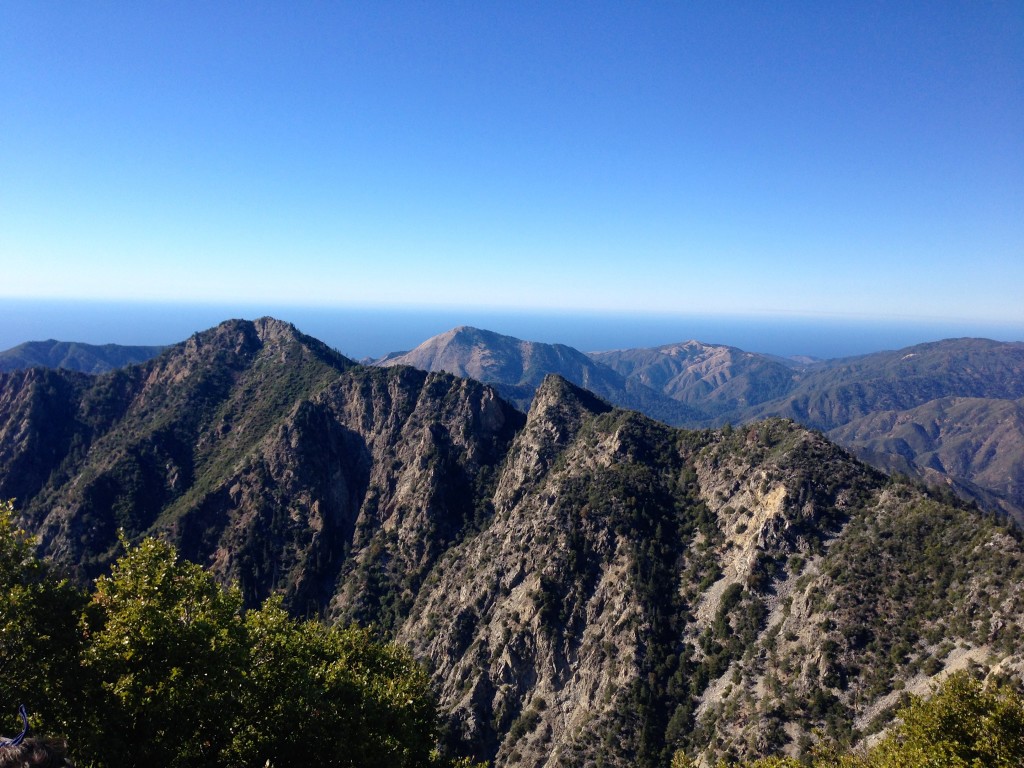
My favorite picture of the trip, taken from VDC. You can see the Window (dead center) and Kandlbinder (largest peak to the left).
From VDC, the adventuresome portion of the trip was over. We headed down the Ventana Double Cone Trail (overgrown from 4,400′ contour to Puerto Suelo trail). Next, we descended the Puerto Suelo Trail, and found it in surprisingly good shape, excepting a number of blowdowns near the lower third of the trail. The first water we encountered in over 24 hours was at the 2,300′ contour along this trail. We accidentally went to Round Rock camp, but used this as an opportunity to fill up on water for the ascent towards Pine Valley Camp.
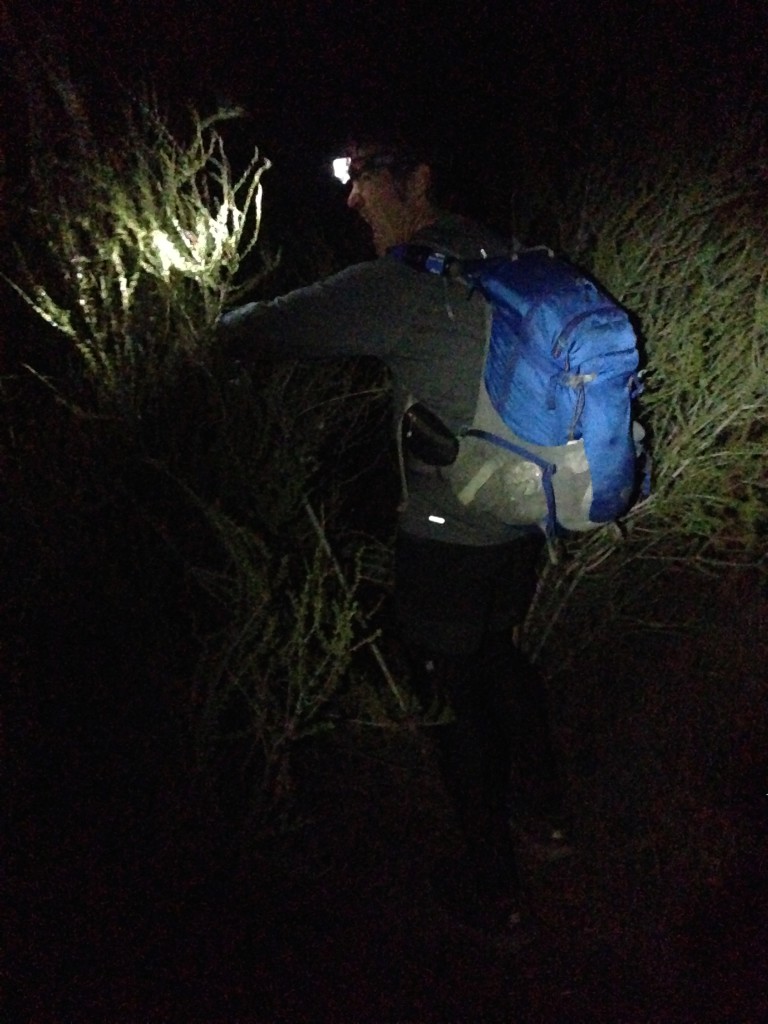
I don’t know if this is an artifact of night photography, but the expression on Glenn’s face in this photo accurately sums up how our shins felt after 3 days of pushing through brush. This is on the Carmel River trail.
The Carmel River trail was clear from Puerto Suello to Round Rock Camp, but overgrown from the Round Rock Camp intersection to Pine Valley. We spent the night near the English Cabin, and then used the somewhat overgrown Bear Basin trail to shortcut to the overgrown Pine Ridge Trail. Pine Ridge trail was overgrown all the way to the Big Sur trail. It was about here that we could finally start running again in earnest.
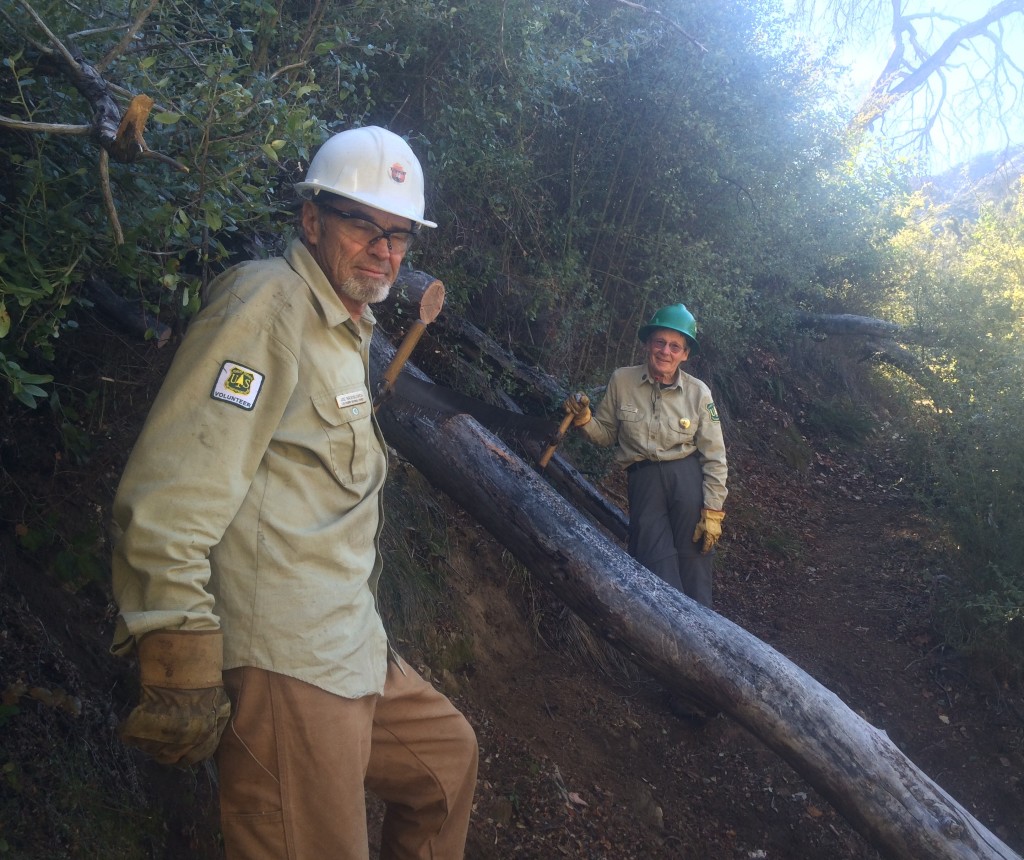
Shortly before Sykes Hot Springs, we ran into Joe Radoslovich and Lynn Moncher who were hand sawing deadfall. We thanked them profusely with heartfelt appreciation for their volunteer work! (Photo Courtesy of Glenn Ohler)
Glenn seemed a little reluctant to spend the extra time visiting Sykes Hot Springs because we both knew that we might need some daylight to hitch-hike back to our car. Nevertheless, I felt that the short deviation would be worth it. We soaked for 20 minutes and felt the bushwhacking pain slowly slip away. It was here that we met “Fat Popi,” who told us that he had recently rebuilt the hot springs. Sure enough, they were much nicer than when I had visited them 20 years ago. He also informed us of a (possibly secret?) seepage that is possibly the site of a future pool. From here, it was an easy 11 mile run back to Big Sur station where we got a ride from a very kind guy named Adam. It took us about 40 minutes to find someone willing to drive us down HWY 1; for the last 20 minutes, Glenn resorted to holding out a $20 bill to encourage drivers to stop for us. We must not have looked too great!











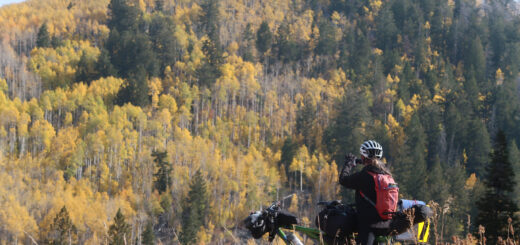



















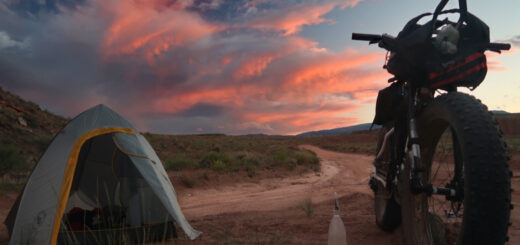
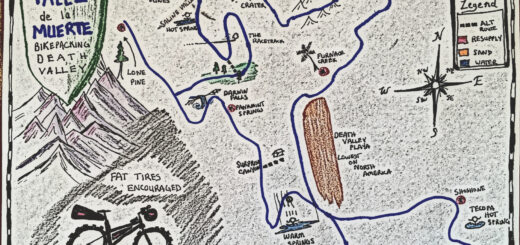
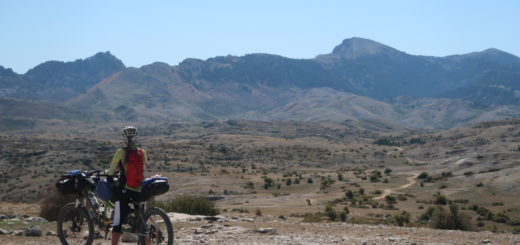
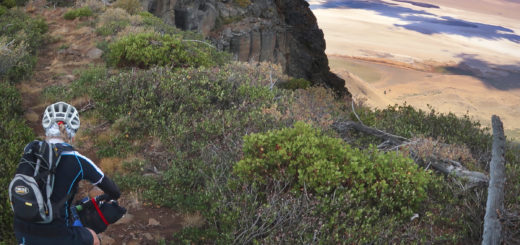
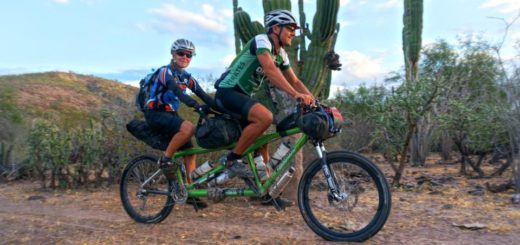
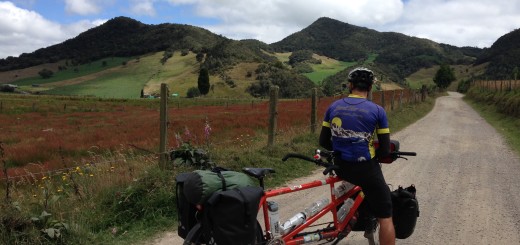
You are amazing. Keep writing and posting.
What great trips Brian. What an adventurer you and Glenn are. I really enjoyed reading your monologue and viewing your wonderful photos. Thanks for sharing your trips.
As usual, great write-up Brian! You should have included the picture of you soaking in the hot spring!
Looking forward to getting back out there!
Glenn, I don’t have a high-res of that picture…
Holy Cow Brian and Glenn, what an adventure! I love all the photos and the story!